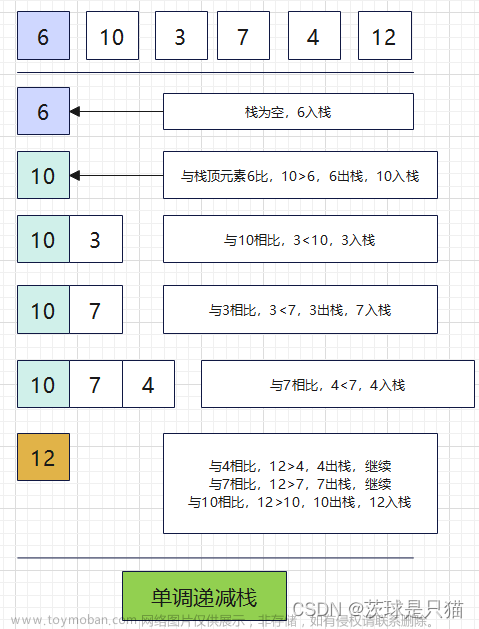7-1 一帮一

#include<stdio.h>
#include<string.h>
struct student
{
int a;
char name[20];
};
struct student1
{
int b;
char name1[20];
};
int main()
{
struct student s1[50];
struct student1 s2[50];
struct student1 s3[50];
int i, n, j = 0, t = 0, c, d;
scanf("%d", &n);
for (i = 0; i < n; i++)
{
scanf("%d %s", &s1[i].a, s1[i].name);
}
for (i = 0; i < n; i++)
{
if (s1[i].a == 1)
{
s2[j].b = i;
strcpy(s2[j].name1, s1[i].name);
j++;
}
if (s1[i].a == 0)
{
s3[t].b = i;
strcpy(s3[t].name1, s1[i].name);
t++;
}
}
c = n / 2 - 1, d = n / 2 - 1;
j = 0, t = 0;
for (i = 0; i < n / 2; i++)
{
if (s3[j].b < s2[t].b)
{
printf("%s %s\n", s3[j].name1, s2[c].name1);
j++;
c--;
}
else
{
printf("%s %s\n", s2[t].name1, s3[d].name1);
t++;
d--;
}
}
return 0;
}
7-2 考试座位号

#include<stdio.h>
struct student
{
char num[17];
int s;
int k;
};
int main()
{
int n = 0;
scanf("%d", &n);
struct student stu[1000]={0};
for (int i = 0; i < n; i++)
{
scanf("%s %d %d", stu[i].num, &stu[i].s, &stu[i].k);
}
int m = 0,ret;
scanf("%d", &m);
for (int i = 0; i < m; i++)
{
scanf("%d", &ret);
int j=0;
for (j = 0; j < n; j++)
{
if (ret == stu[j].s)
{
printf("%s %d\n", stu[j].num, stu[j].k);
}
}
}
return 0;
}
7-3 新键表输出

#include <stdio.h>
#include <stdlib.h>
// 定义链表节点结构体
typedef struct ListNode {
int val;
struct ListNode* next;
} ListNode;
// 定义头节点指针
ListNode* createList() {
ListNode* head = NULL;
int num;
while (1) {
scanf("%d", &num);
if (num == -1) {
break;
}
ListNode* newNode = (ListNode*)malloc(sizeof(ListNode));
newNode->val = num;
newNode->next = NULL;
if (head == NULL) {
head = newNode;
} else {
ListNode* cur = head;
while (cur->next != NULL) {
cur = cur->next;
}
cur->next = newNode;
}
}
return head;
}
// 遍历链表,将奇数值节点插入新链表
ListNode* createNewList(ListNode* head) {
ListNode* newHead = NULL;
ListNode* cur = head;
while (cur != NULL) {
if (cur->val % 2 != 0) {
ListNode* newNode = (ListNode*)malloc(sizeof(ListNode));
newNode->val = cur->val;
newNode->next = NULL;
if (newHead == NULL) {
newHead = newNode;
} else {
ListNode* temp = newHead;
while (temp->next != NULL) {
temp = temp->next;
}
temp->next = newNode;
}
}
cur = cur->next;
}
return newHead;
}
// 打印链表
void printList(ListNode* head) {
ListNode* cur = head;
printf("%d", cur->val);
cur = cur->next;
while (cur != NULL) {
printf(" %d", cur->val);
cur = cur->next;
}
printf("\n");
}
int main() {
// 创建链表
ListNode* head = createList();
// 创建新链表
ListNode* newHead = createNewList(head);
// 打印新链表
printList(newHead);
return 0;
}
7-4 可怕的素质

#include <stdio.h>
#include<stdlib.h>
typedef struct student student;
struct student{
int ret;
struct student *next;
};
student *insert(int n);
void prin(student*,int n);
int main(){
int n;
student *stu1;
scanf("%d", &n);
stu1=insert(n);
prin(stu1, n);
return 0;
}
void prin(student*stu1,int n){
student *p = stu1->next;
while(p!=NULL){
if(p->next!=NULL)printf("%d ", p->ret);
else
printf("%d", p->ret);
p = p->next;
}
}
student *insert(int n){
student *head;
head = (struct student*) malloc(sizeof(student));
head->next = NULL;
student *p = head, *q;
int pos = 0;
for (int i = 1; i <= n;i++){
scanf("%d", &pos);
q = (struct student *)malloc(sizeof(student));
q->ret = i;
q->next = NULL;
if(i==1){
head->next = q;
}
else if(pos==0){
q->next = head->next;
head->next = q;
}
else if(pos!=0){
p = head->next;
while(p->ret!=pos){
p = p->next;
}
q->next = p->next;
p->next = q;
}
}
return head;
}
7-5 找出同龄者

#include<stdio.h>
typedef struct student
{
char name[10];
int age;
}student;
int main()
{
int n = 0;
student stu[100];
scanf("%d", &n);
for (int i = 0; i < n; i++)
{
scanf("%s %d", stu[i].name, &stu[i].age);
}
int m = 0;
scanf("%d", &m);
int j = 0;
for (int i = 0; i < n; i++)
{
if (stu[i].age != m)
{
printf("%s", stu[i].name);
j = i;
break;
}
}
for (int i = j + 1; i < n; i++)
{
if (stu[i].age != m)
{
printf(" %s", stu[i].name);
}
}
return 0;
}
7-6 排队
 文章来源:https://www.toymoban.com/news/detail-757892.html
文章来源:https://www.toymoban.com/news/detail-757892.html
#include<stdio.h>
#include<stdlib.h>
typedef struct student student;
//还是双链表好用
struct student{
student *prior;
student *next;
int ri, bi, fi,ret;
double height;
student *arret;
};
student* create(int n){
student *head, *p, *q;
head = (student*)malloc(sizeof(student));
head->prior = NULL;
head->next = NULL;
head->arret = NULL;
for (int i = 1; i <= n;i++){
q = (student*)malloc(sizeof(student));
scanf("%lf", &q->height);
q->ret = i;
if(i==1){
head->next = q;
head->arret = q;
q->arret = NULL;
q->prior = head;
q->next = NULL;
}else {
p->next = q;
p->arret = q;
q->arret = NULL;
q->prior = p;
q->next = NULL;
}
p = q;
}
return head;
}
void swap(student *p1,student *p2){
student *p1f, *p1b, *p2f, *p2b;
p1f = p1->prior;
p1b = p1->next;
p2f = p2->prior;
p2b = p2->next;
p1f->next = p1b;
p1b->prior = p1f;
p1b->next = p2f;
p2f->prior = p1b;
p2f->next = p2b;
if(p2b!=NULL)
p2b->prior = p2f;
}
int main(){
int n;
scanf("%d", &n);
student *stu1;
stu1=create(n);
student *p = stu1->next;
for (int i = 1; i < n;i++){
p = stu1->next;
for (int j = 1; j < n - i + 1;j++){
if(p->height<p->next->height){
swap(p,p->next);
}
else p = p->next;
}
}
p = stu1->next;
for (int i = 1; i <= n;i++){
if(i==1){
p->fi = 0;
p->bi = p->next->ret;
}else if(i==n){
p->bi = 0;
p->fi = p->prior->ret;
}else {
p->fi = p->prior->ret;
p->bi = p->next->ret;
}
p->ri = i;
p = p->next;
}
p = stu1->arret;
for (int i = 1; i <= n;i++){
printf("%d %d %d\n", p->ri, p->fi, p->bi);
p = p->arret;
}
return 0;
}
7-7 军训
 文章来源地址https://www.toymoban.com/news/detail-757892.html
文章来源地址https://www.toymoban.com/news/detail-757892.html
#include<stdio.h>
#include<stdlib.h>
typedef struct queue queue;
struct queue{
int rank;
queue *prior;
queue *next;
int size;
};
void print(queue *queue1){
queue *p = queue1->next;
while(p!=NULL){
if(p->next!=NULL)printf("%d ", p->rank);
else
printf("%d\n", p->rank);
p = p->next;
}
}
queue *delete_LB(queue *queue1){
queue *k = queue1;
queue1->prior->next = queue1->next;
if(queue1->next!=NULL)queue1->next->prior = queue1->prior;
queue1 = queue1->prior;
free(k);
return queue1;
}
queue *create(int n){
queue *head;
queue *p, *q;
head = (queue*)malloc(sizeof(queue));
head->prior = NULL;
head->next = NULL;
for (int i = 1; i <= n;i++){
q = (queue *)malloc(sizeof(queue));
q->rank = i;
if(i==1){
head->next = q;
q->prior = head;
q->next = NULL;
}else {
p->next = q;
q->prior = p;
q->next = NULL;
}
p = q;
}
return head;
}
int main(){
int n;
scanf("%d", &n);
queue document[105];
queue *a;
for (int i = 1; i <= n;i++){
int count;
scanf("%d", &count);
a = create(count);
a->size = count;
queue *p;
while(a->size>3){
p = a->next;
for (int j = 1; j <= count; j++)
{
if (j % 2 == 0)//这里无需判断是否size>3,因为无论是否满足,都必须在进行的一轮内将所有2的报数删除;
{
p=delete_LB(p);
a->size--;
}
p = p->next;
}
count = a->size;
p = a->next;
if(a->size>3)//这里加上size>3的判断才能保证n=40的情况下37不会被删除,否则还会进行一次j=3时的删除操作;特殊情况(即处理完上一轮2的报数后size恰好为3,但是此时没有加入判断的话循环会继续运行,会多删除1项)
{
for (int j = 1; j <= count; j++)
{
if (j % 3 == 0)
{
p = delete_LB(p);
a->size--;
}
p = p->next;
}
}
count = a->size;
}
document[i] = *a;
}
for (int i = 1; i <= n;i++){
print(&document[i]);
}
return 0;
}
到了这里,关于【C/PTA —— 15.结构体2(课外实践)】的文章就介绍完了。如果您还想了解更多内容,请在右上角搜索TOY模板网以前的文章或继续浏览下面的相关文章,希望大家以后多多支持TOY模板网!












